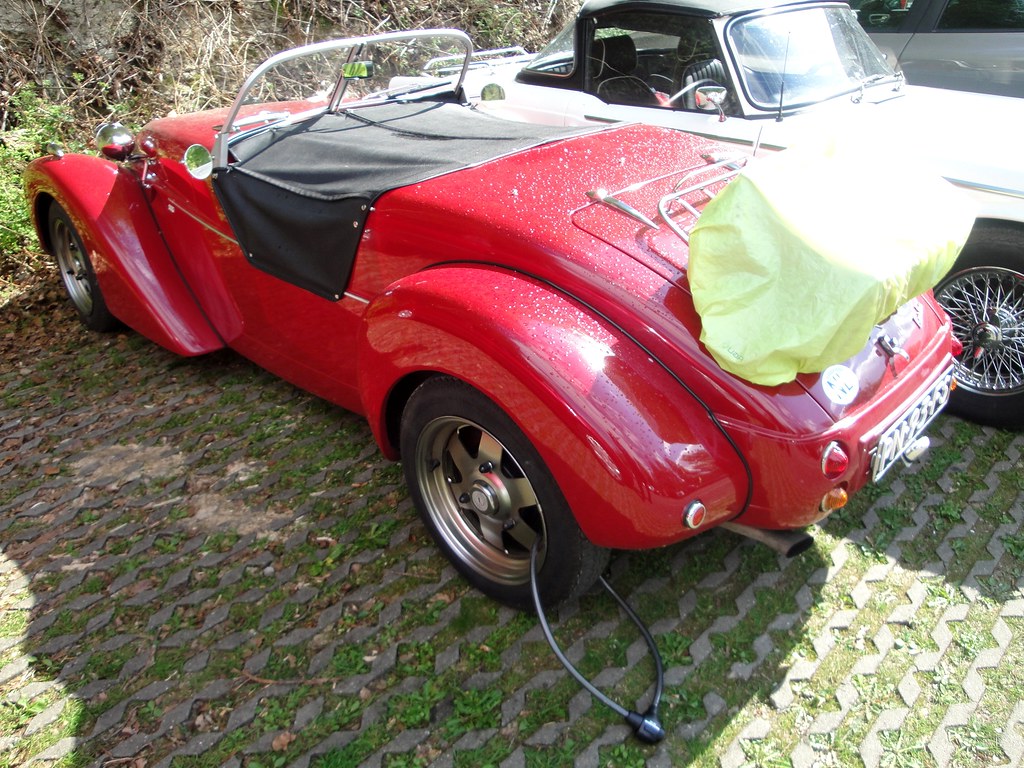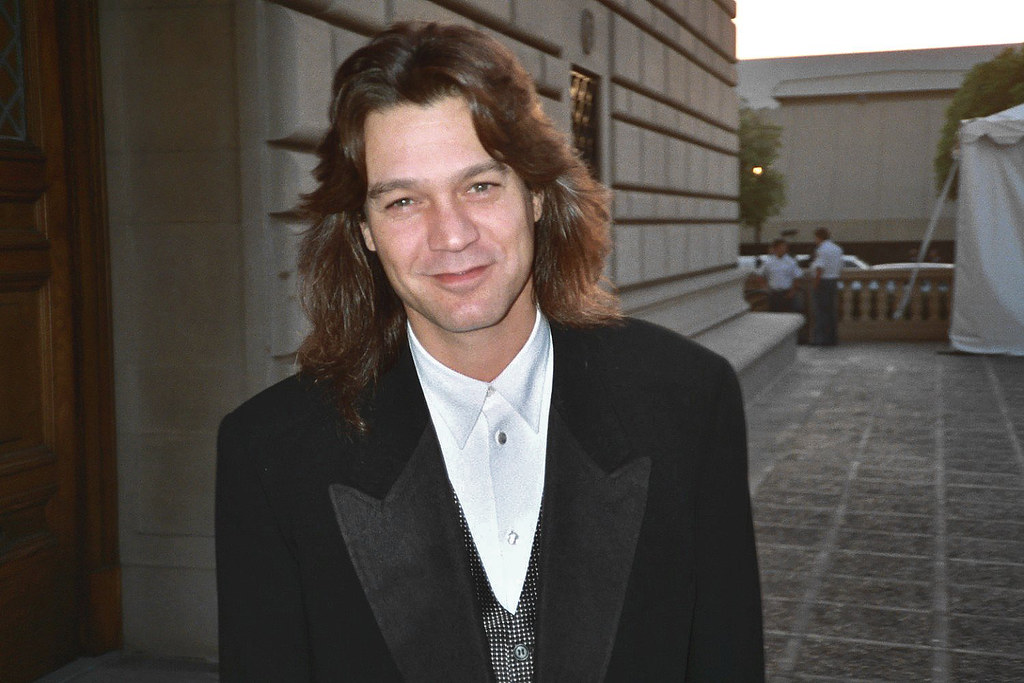
Eddie Van Halen, synonymous with revolutionary guitar playing and a scorching, fun-loving approach to rock ‘n’ roll, left an indelible mark on the music world. His passing at 65 was a heavy blow to fans and the automotive community alike. Beyond his “Frankenstein” guitar and groundbreaking sound, Eddie harbored another profound passion: cars. Growing up in the late 70s and 1980s, when hot cars were an essential part of the cultural landscape, his love for powerful, customized vehicles became as legendary as his riffs.
When Van Halen burst onto the scene in 1978, they not only ushered in a new era of hard rock but also celebrated custom cars in their iconic music videos. The “Hot for Teacher” clip famously featured David Lee Roth tearing up the asphalt in a blown ’32 Ford tub. Meanwhile, the “Panama” video immortalized the revving V12 of Eddie’s own 1972 Lamborghini Miura in the song itself. These weren’t just fleeting images; they reflected a deeply ingrained automotive enthusiasm shared by many in the band. He didn’t just collect these machines; he truly drove them, pushing their limits on tracks or cruising California’s freeways.
His garage wasn’t just a storage space; it was a testament to his personal taste, technical curiosity, and love for driving. From intensely customized American pickups and muscle cars to formidable European supercars, Eddie’s collection was as diverse and dynamic as his music. Each vehicle tells a story, revealing a facet of the rock legend’s personality and his unwavering appreciation for engineering, speed, and bespoke craftsmanship. Let’s delve into seven of the most amazing rides Eddie Van Halen owned over the years.
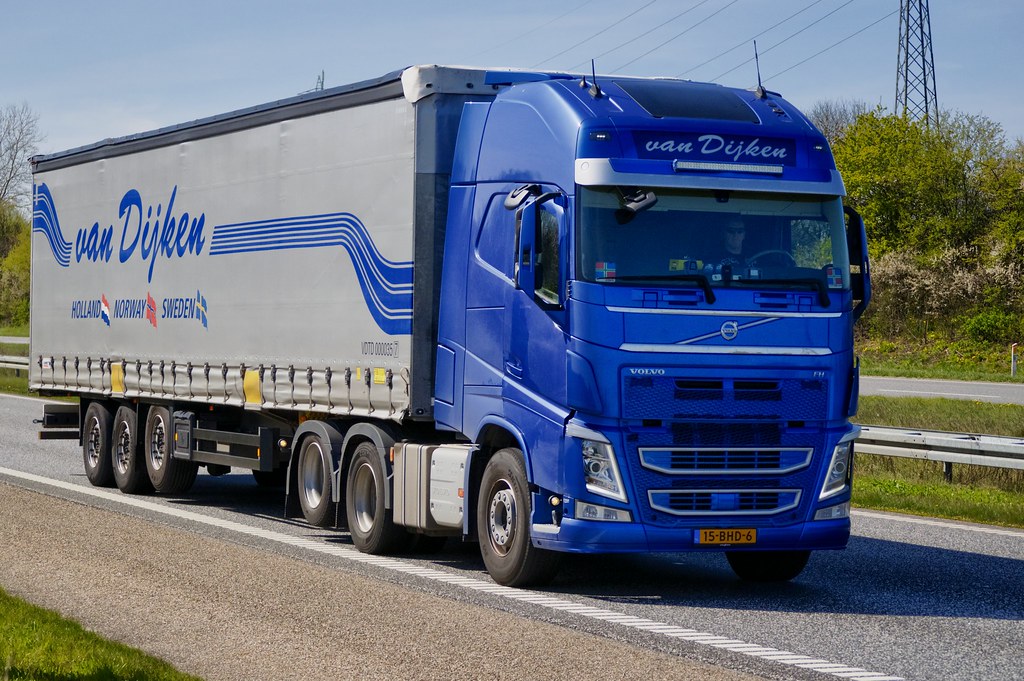
1. **Van Hauler C1500**One of Eddie’s most famous and instantly recognizable rides was his Chevrolet C1500 pick-up, affectionately known as the “Van Hauler.” This masterpiece was built by the renowned Hot Rods by Boyd and meticulously designed by the legendary Chip Foose. Its style was deeply personal, featuring a rear rollpan, a sleek billet grille, and a distinctive paint scheme inspired by Eddie’s famous “Frankenstein” guitar, all complemented by striking 16-inch billet rims.
Underneath its iconic exterior, the Van Hauler was even wilder, boasting an LT1 engine swap and a sophisticated Corvette independent rear suspension system. This transformed a utilitarian pickup into a high-performance machine. This customization level was a testament to Eddie’s desire for vehicles as much about performance and unique engineering as aesthetics, embodying the “hot-rodded” spirit often found in his guitar modifications.
So popular was this custom creation that a second truck was built for *Sport Truck* magazine as a giveaway car. Eddie’s personal “Van Hauler” was truly special. After falling into disrepair, it was lovingly restored in 2009 by Hot Rods by Boyd alumni Duane Mayer and Bernt Karlsson. It was eventually auctioned off at Barrett-Jackson in Scottsdale in 2010, cementing its place in automotive and rock history.
Car Model Information: 1990 Chevrolet Pickup Truck Base
Name: Chevrolet small-block engine
Caption: #L98
Aka: ubl
Manufacturer: General Motors
Production: ubl
Configuration: V8 engine
Block: Cast iron,aluminum
Head: Cast iron, aluminum
Bore: ubl
Abbr: on
Stroke: ubl
Displacement: ubl
Disp: flip
Valvetrain: ubl
Fueltype: Gasoline
Fuelsystem: Carburetor,fuel injection
Coolingsystem: Radiator (engine cooling)
Timing: Chain
Power: convert
Torque: convert
Weight: convert
Predecessor: Chevrolet Series D,Cadillac V8 engine#OHV,Oldsmobile V8 engine#Generation I
Successor: LS based GM small-block engine
Categories: All Wikipedia articles needing clarification, All articles needing additional references, All articles that may contain original research, All articles to be expanded, All articles with dead external links
Summary: The Chevrolet small-block engine is a series of gasoline-powered V8 automobile engines, produced by the Chevrolet division of General Motors in two overlapping generations between 1954 and 2003, using the same basic engine block. Referred to as a “small-block” for its size relative to the physically much larger Chevrolet big-block engines, the small-block family spanned from 262 cu in (4.3 L) to 400 cu in (6.6 L) in displacement. Engineer Ed Cole is credited with leading the design for this engine. The engine block and cylinder heads were cast at Saginaw Metal Casting Operations in Saginaw, Michigan.
The Generation II small-block engine, introduced in 1992 as the LT1 and produced through 1997, is largely an improved version of the Generation I, having many interchangeable parts and dimensions. Later generation GM engines, which began with the Generation III LS1 in 1997, have only the rod bearings, transmission-to-block bolt pattern and bore spacing in common with the Generation I Chevrolet and Generation II GM engines.
Production of the original small-block began in late 1954 for the 1955 model year, with a displacement of 265 cu in (4.3 L), growing over time to 400 cu in (6.6 L) by 1970. Among the intermediate displacements were the 283 cu in (4.6 L), 327 cu in (5.4 L), and numerous 350 cu in (5.7 L) versions. Introduced as a performance engine in 1967, the 350 went on to be employed in both high- and low-output variants across the entire Chevrolet product line.
Although all of Chevrolet’s siblings of the period (Buick, Cadillac, Oldsmobile, Pontiac, and Holden) designed their own V8s, it was the Chevrolet 305 and 350 cu in (5.0 and 5.7 L) small-block that became the GM corporate standard. Over the years, every GM division in America, except Saturn and Geo, used it and its descendants in their vehicles. Chevrolet also produced a big-block V8 starting in 1958 and still in production as of 2024.
Finally superseded by the GM Generation III LS in 1997 and discontinued in 2003, the engine is still made by a General Motors subsidiary in Springfield, Missouri, as a crate engine for replacement and hot rodding purposes. In all, over 100,000,000 small-blocks had been built in carbureted and fuel injected forms between 1955 and November 29, 2011. The small-block family line was honored as one of the 10 Best Engines of the 20th Century by automotive magazine Ward’s AutoWorld.
In February 2008, a Wisconsin businessman reported that his 1991 Chevrolet C1500 pickup had logged over one million miles without any major repairs to its small-block 350 cu in (5.7 L) V8 engine.
All first- and second-generation Chevrolet small-block V8 engines share the same firing order of 1-8-4-3-6-5-7-2.
Get more information about: Chevrolet small-block engine (first- and second-generation)
Buying a high-performing used car >>>
Brand: Chevrolet Model: C1500
Price: $39,900 Mileage: 76,044 mi.
Read more about: Dax Shepard’s Legendary Garage: Unpacking 14 Automotive Jewels in His Coveted Collection

2. **1970 Chevrolet Nova**Eddie Van Halen’s collection prominently featured a completely custom 1970 Chevrolet Nova, a vehicle that perfectly blended nostalgic muscle car appeal with modern pro touring performance. This powerful machine was built by Jim Bassett’s Bones Fab shop in California, showcasing Eddie’s clear affinity for classic American metal, particularly those with serious performance upgrades.
The Nova’s driveline was nothing short of impressive, consisting of a potent 454 LSX motor, a robust Tremec T56 gearbox, and a Currie nine-inch differential, ensuring this classic could handle immense power with precision. The suspension and brakes were completely revised, including a sophisticated four-link rear setup, all designed to deliver a modern driving experience. The body featured lightweight carbon fiber for both the bonnet and boot, enveloped in a stunning PPG Tang Yellow Orange duco, making it a true head-turner.
This “suped-up Nova” wasn’t just for show; it was brutally fast, capable of pushing 650 horsepower thanks to the LSX 454 crate engine. It could accelerate from 0 to 60 in just 5.9 seconds, a formidable feat. With a full roll cage and Ridetech suspension, this car was built for serious driving, and Eddie loved taking it on the California freeways. It was offered with a certificate of authenticity signed by Eddie, highlighting its unique provenance.
Read more about: 13 Underappreciated Wagons: Unearthing Automotive Utility’s Hidden Gems
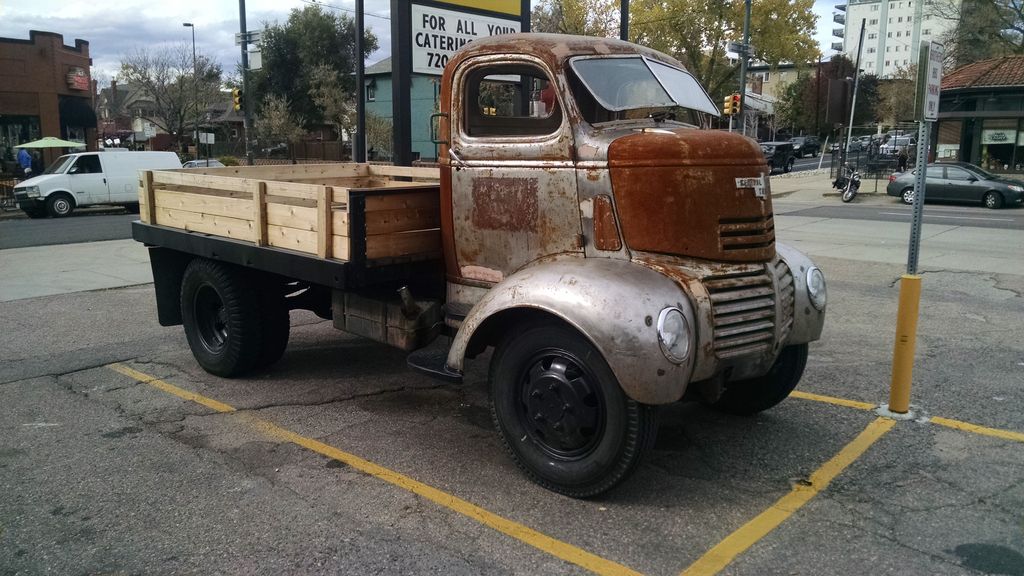
3. **1947 Dodge COE**Further demonstrating his penchant for unique and heavily customized vehicles, Eddie Van Halen also owned a “très cool” 1947 Dodge cab-over-engine (COE) truck, another exceptional build from Jim Bassett’s Bones Fab shop. This behemoth arrived at Bones Fab already modified with a Ford 6.9-liter diesel engine and a four-speed manual transmission, but Eddie sought significant improvements.
The Bones Fab crew undertook a comprehensive update, transforming it into a significantly more enjoyable and powerful machine. The drivetrain was revamped with a newer Ford 7.3-liter turbo diesel engine, paired with a robust ZF five-speed gearbox and a Gear Vendors overdrive unit for enhanced highway cruise-ability. The radiator was upgraded to a Fluidyne aluminum unit with twin Spal fans, ensuring optimal cooling.
Beyond the engine, the truck’s steering was notably upgraded with a Lee Manufacturing steering box and ram assist unit, making the massive vehicle far more manageable and significantly improving its driving dynamics from “downright scary to drive to very enjoyable.” Despite its imposing size and raw power, Eddie frequently used this customized COE as his “Saturday driver” for practical trips to stores like Lowe’s and Home Depot, showcasing its surprising versatility. This truck, too, came with a certificate of authenticity signed by Eddie, underscoring its significance.
Read more about: Dax Shepard’s Legendary Garage: Unpacking 14 Automotive Jewels in His Coveted Collection
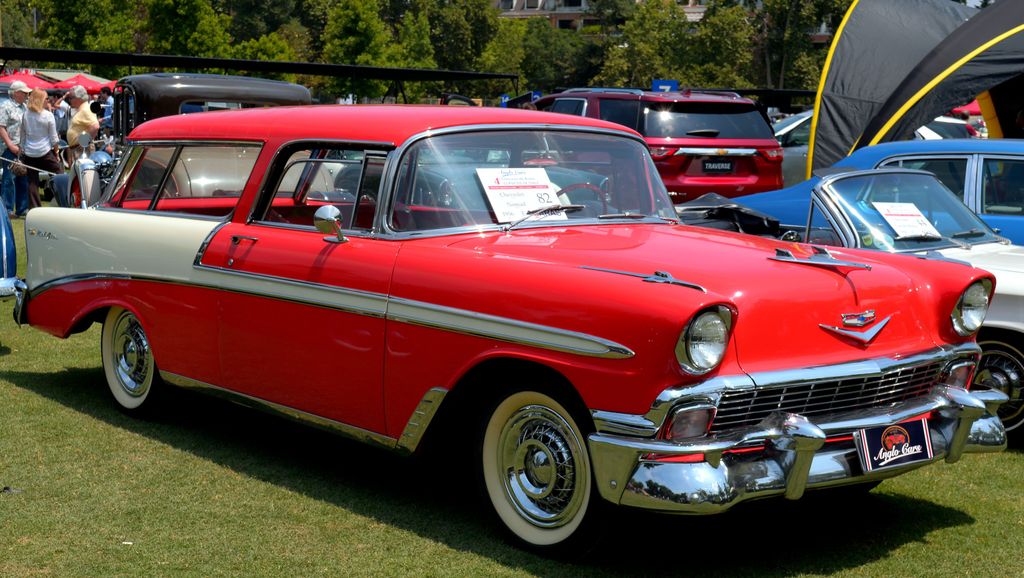
4. **1956 Chevrolet Nomad**Amidst the array of wildly customized and high-performance machines in Eddie’s garage, his 1956 Chevrolet Nomad stood out as a tamer yet supremely sweet example of classic American automotive elegance. While not as overtly “in your face” as some of his other builds, it was a beautifully preserved and subtly enhanced piece of automotive history, exuding both class and sophistication.
Eddie largely kept the original build of the Nomad, appreciating its inherent charm and design. Under the hood, it featured a 265-cubic inch Power Pack V8 engine that delivered a respectable 256 horsepower, a significant output for a 1956-era Chevy. This V8 was complemented by a double-barrel carburetor and independent front and rear suspensions, along with power steering and power brakes, ensuring a smooth yet capable driving experience.
This particular Nomad also boasted factory air conditioning, adding to its luxurious appeal and making it a comfortable cruiser. The combination of classic styling, period-correct power, and creature comforts made it a highly desirable car. It ultimately sold at Barrett-Jackson’s 2009 Scottsdale auction for an impressive $930,000, a testament to its pristine condition and its association with the rock legend.
Car Model Information: 1957 Chevrolet Nomad
Caption: 1955 Chevrolet Bel Air Nomad
Name: Chevrolet Nomad
Manufacturer: Chevrolet
Production: 1955–1961,1968–1972
Layout: FR layout
Categories: 1950s cars, 1960s cars, Articles with short description, Chevrolet concept vehicles, Chevrolet vehicles
Summary: Chevrolet Nomad is a nameplate used by Chevrolet in North America from the 1950s to the 1970s, applied largely to station wagons. Three different Nomads were produced as a distinct model line, with Chevrolet subsequently using the name as a trim package.
Marketed as a halo model of the Chevrolet station wagon line for the Tri-Five series, the Nomad was repackaged as a station wagon counterpart of the Chevrolet Bel Air and Chevrolet Impala from 1958 to 1961. From 1968 to 1972, the Nomad returned as the base-trim Chevrolet Chevelle station wagon.
Making its debut on a 1954 concept car, the nameplate has again seen used by Chevrolet on multiple concept vehicles; none have reached production.
Get more information about: Chevrolet Nomad
Buying a high-performing used car >>>
Brand: Chevrolet Model: Nomad
Price: $72,999 Mileage: 30 mi.
Read more about: 20 Classic Station Wagons That Bring Back Childhood Road Trip Memories
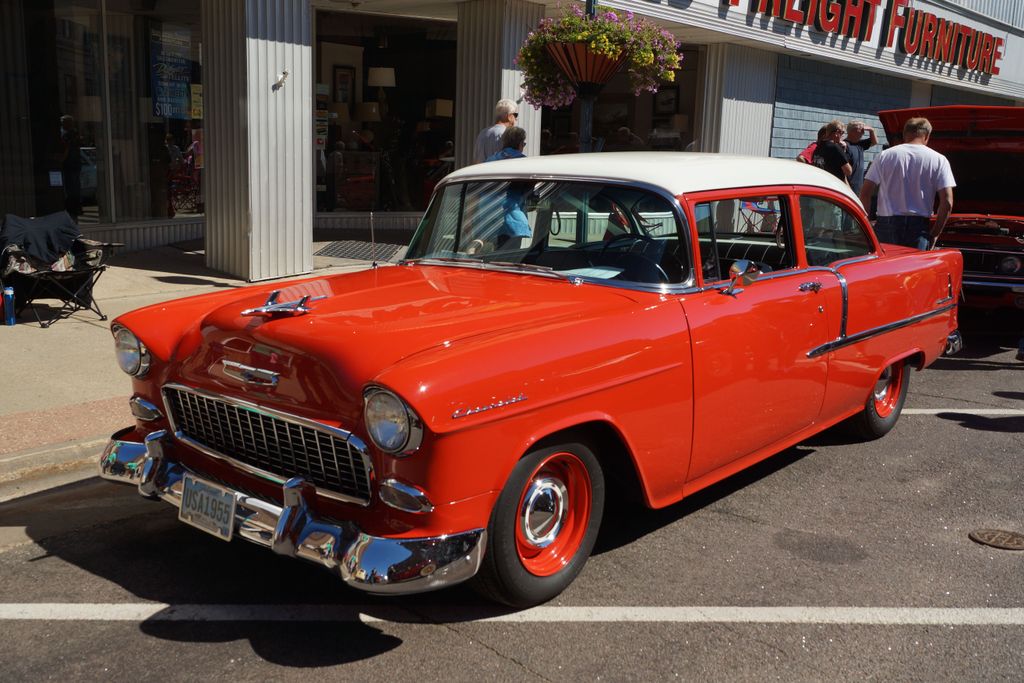
5. **1955 Chevrolet 210**Eddie Van Halen certainly seemed to have a distinct affection for “shoebox Chevs,” as evidenced by his ownership of a smooth 1955 Chevrolet 210. This classic sedan, while appearing perhaps a little more understated than the Nomad, possessed a serious “bad-arse” demeanor, showcasing Eddie’s appreciation for cars that packed a powerful punch beneath a stylish exterior.
Under the hood, this ’55 Chevy was far from stock, featuring a formidable 408-cube small-block engine. This powerful heart was mated to a Muncie Rock Crusher four-speed transmission, a combination built for serious performance and driving engagement. The vehicle was capable of producing as much as 500 horsepower, transforming this classic sedan into a veritable muscle car, ready to unleash its power at Eddie’s command.
Known as the “Bel-Air,” this hard-top work of art featured a gorgeous black and white paint job and stunning exterior. Further enhancements included braided fuel lines, an aluminum radiator with electric fans, and MSD electronic ignition, all contributing to its high-performance credentials. This cherished classic was later sold at Mecum’s Houston auction in 2016 and is now reportedly being driven by Eddie’s brother, Alex Van Halen, keeping a piece of Eddie’s legacy within the family.
Car Model Information: 1957 Chevrolet 210 Base
Name: Chevrolet 210
Manufacturer: Chevrolet
Caption: 1956 Chevrolet Two-Ten 4-Door Sedan
Layout: FR layout
Production: 1953–1957
Assembly: Flint Truck Assembly,Flint, Michigan
Platform: GM A platform (1936)
Predecessor: Chevrolet Deluxe
Successor: Chevrolet Biscayne
Related: Chevrolet 150,Pontiac Super Chief
Categories: 1950s cars, All articles needing additional references, Articles needing additional references from March 2024, Articles with short description, Cars discontinued in 1957
Summary: The Chevrolet 210 or Two-Ten is a midrange car from Chevrolet that was marketed from 1953 until 1957. It took its name by shortening the production series number 2100 by one digit in order to capitalize on the 1950s trend toward numerical auto names. The numerical designation “210” was also sporadically used in company literature. It replaced the Styleline DeLuxe model available in previous years. The 210 was discontinued after the 1957 model year to be replaced by the Biscayne.
Get more information about: Chevrolet 210
Buying a high-performing used car >>>
Brand: Chevrolet Model: 210
Price: $49,990 Mileage: 1,600 mi.
Read more about: 13 Underappreciated Wagons: Unearthing Automotive Utility’s Hidden Gems
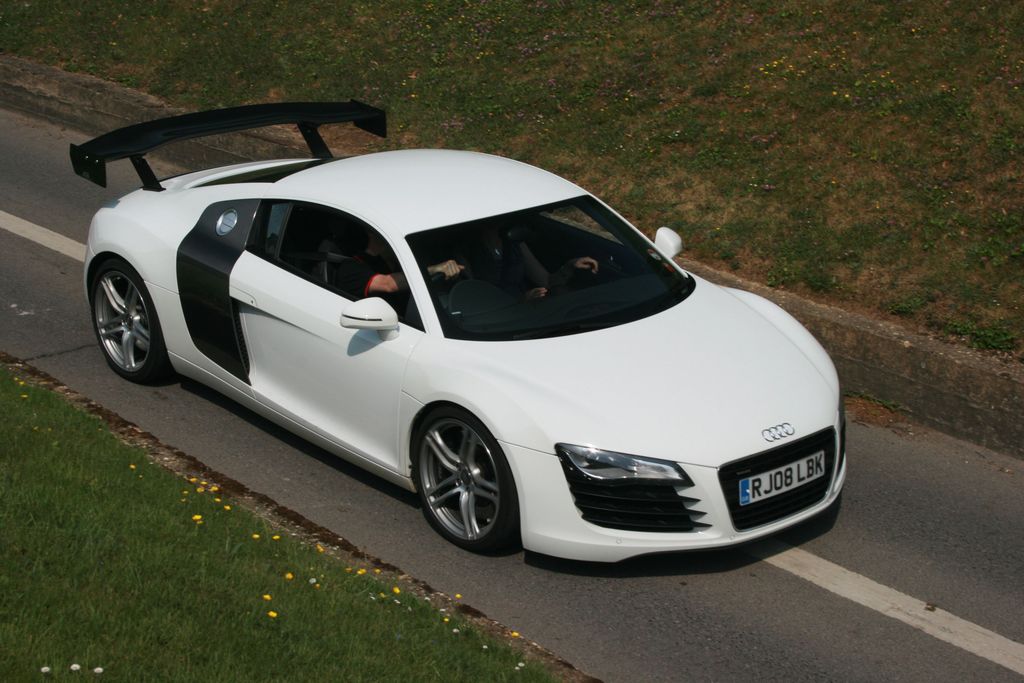
6. **Supercharged Audi R8s**While Eddie Van Halen clearly had a deep love for classic American iron, his garage was by no means limited to vintage machines. He was equally fond of more modern performance vehicles, with a pair of supercharged Audi R8s proudly taking their place in his impressive collection. He owned both a V8 and a V10 version, each kitted out to his exacting performance standards.
These contemporary marvels were anything but stock. Both Audi R8s featured six-speed manual transmissions, a clear indicator of Eddie’s preference for direct driver engagement, and were enhanced with rowdy exhausts and superchargers. These modifications significantly boosted their already impressive performance, making them capable of topping 200 mph on the track and producing a staggering 540 to 620 horsepower.
The Audi R8s, often seen in “Ibis White,” were a world apart from his classic Chevys and the Dodge COE, exuding speed, sophistication, and cutting-edge German engineering. Eddie was known to frequently visit California’s storied Sonoma Raceway, often driving one of his custom supercharged Audi R8s, pushing them to their limits. This demonstrated his enthusiasm for experiencing the pinnacle of modern automotive performance alongside his cherished classics.
Car Model Information: 2018 Audi R8 5.2 V10
Caption: Audi R8 V10 Plus (Type 4S)
Manufacturer: Audi
Production: June 2006 – March 2024,(45,949 Units)
Class: Sports car
BodyStyle: coupé
Layout: Longitudinal engine,Mid-engine design,rear-wheel-drive
Sp: uk
ModelYears: 2007–2024
Categories: 2010s cars, 2020s cars, All articles with unsourced statements, Articles with short description, Articles with unsourced statements from March 2019
Summary: The Audi R8 is a mid-engine, 2-seater sports car, which uses Audi’s trademark quattro permanent all-wheel drive system. It was introduced by the German car manufacturer Audi AG in 2006. Production ended in the first quarter of 2024.
The car is exclusively designed, developed, and manufactured by Audi AG’s private subsidiary company manufacturing high performance automotive parts, Audi Sport GmbH (formerly quattro GmbH), and was inspired by the Lamborghini Gallardo albeit the second generation is built using the Huracán platform. The fundamental construction of the R8 is based on the Audi Space Frame, and uses an aluminium monocoque which is built using space frame principles. The car is built by Audi Sport GmbH in a newly renovated factory at Audi’s ‘aluminium site’ at Neckarsulm in Germany. At the time it was introduced in 2006, the R8 became the first production car with full-LED headlamps.
Get more information about: Audi R8
Buying a high-performing used car >>>
Brand: Audi Model: R8
Price: $134,995 Mileage: 16,702 mi.
Read more about: Inside Eddie Van Halen’s Dream Garage: 13 Iconic Cars Owned by the Rock Legend
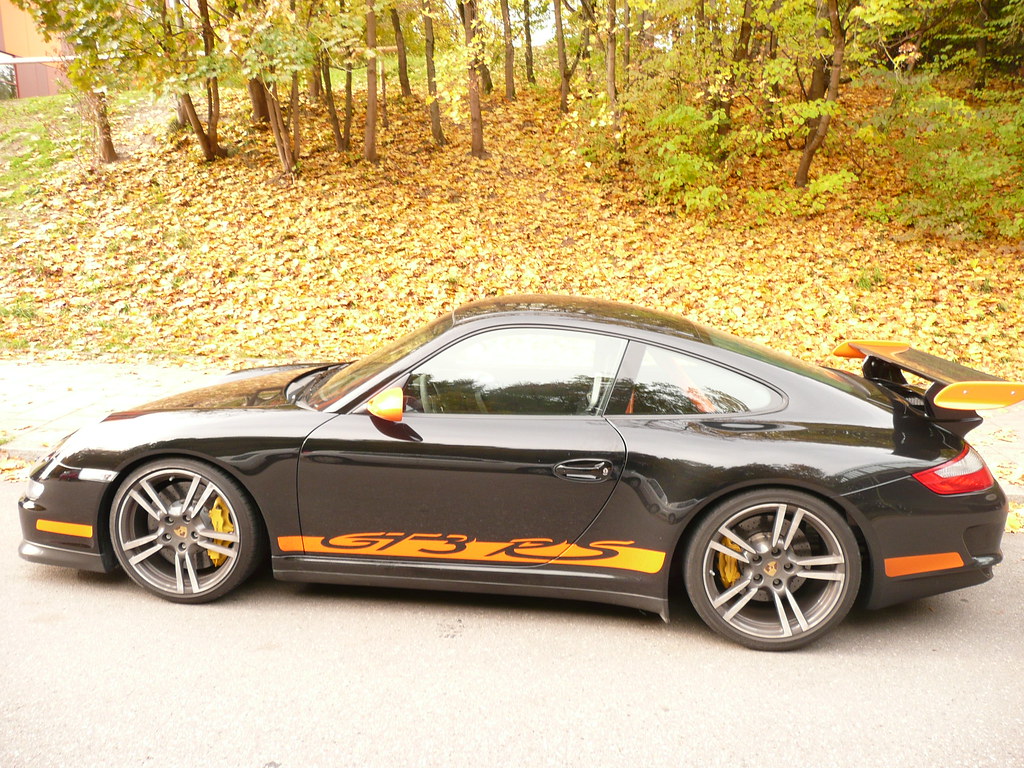
7. **Porsche 911 GT3 RS**Eddie Van Halen’s appreciation for German engineering extended prominently to Porsche, and his 911 GT3 RS was a particularly cherished and frequently driven member of his high-performance fleet. This ultra-high-performance car was built for both street and track, and Eddie wasn’t shy about letting people know he was behind the wheel, proudly sporting “5150” license plates—a direct reference to Van Halen’s iconic 1986 album of the same name.
This Porsche was no ordinary GT3 RS; it was personally custom-ordered from the factory and purchased new by Eddie. Under the hood, its 4.0-liter flat-six engine produced an impressive 490 horsepower and 346 foot-pounds of torque, enabling it to accelerate from 0 to 60 mph in a blistering 3.3 seconds and achieve a top speed of 193 mph. Eddie liked to drive his cars hard, regularly hitting the race track with this formidable machine.
What made this particular 911 GT3 RS so special to Eddie was its handling. He recounted to *Car and Driver*, “It’s the first time ever I’ve been able to four-wheel drift a Porsche. Every other Porsche I’ve ever had, I’ve spun them all. Well, every 911, anyway.” This remarkable stability, coupled with a suspension setup by BBI Autosport, allowed him to truly slide the car, a testament to its engineering and his skill. This vehicle was offered with a certificate of authenticity signed by Eddie, making it a truly unique opportunity for collectors.
Continuing our journey through Eddie Van Halen’s truly incredible automotive world, it’s clear his garage was a dynamic reflection of his diverse tastes. From intensely customized American classics to formidable European supercars and even some delightfully quirky cruisers, each vehicle offered a distinct glimpse into the rock legend’s multifaceted personality and his unyielding appreciation for power, precision, and bespoke craftsmanship. Let’s dive into eight more standout rides that rounded out his legendary collection.
Read more about: Timeless Icons: 14 Classic 1960s Cars That Continue to Captivate Enthusiasts and Turn Heads
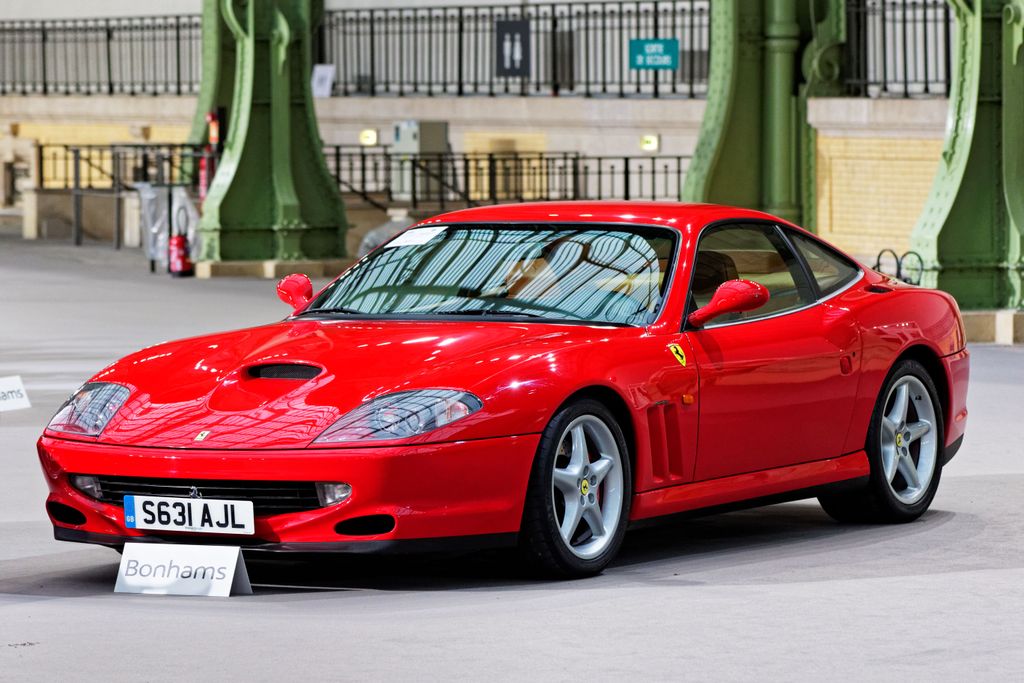
8. **Ferrari 550 Maranello**Before the Porsche 911 GT3 RS became his go-to track machine, Eddie found his need for speed satisfied by an equally impressive, though perhaps less obvious, choice: his Ferrari 550 Maranello. This black Italian stallion was a testament to his versatility as a driver and his appreciation for sophisticated performance, proving that Eddie’s love for cars extended beyond the predictable choices of his rockstar peers.
His 550 Maranello was no mere street cruiser; it was meticulously prepared for serious track duty. The car featured essential upgrades such as a roll cage and dedicated race seats, ensuring safety and optimal driving position during high-speed sessions. It also sported Challenge-style rims, which not only enhanced its aggressive aesthetics but also likely contributed to its track performance, making it clear that this Ferrari was built to be driven hard.
Underneath its sleek, aerodynamic body, Van Halen’s 550 Maranello packed a formidable punch with a 5.5-liter V12 engine. This powerhouse was capable of producing an astonishing 478 horsepower, propelling the car to an impressive top speed of 199 mph. The ability to accelerate from 0 to 60 mph in a blistering 4.2 seconds made it a truly exhilarating machine for Eddie to command on the circuit.
Ferrari originally produced the 550 Maranello between 1996 and 2002. While it might not have been Ferrari’s absolute best-selling model of the 1990s, its blend of front-engine V12 power and grand touring comfort clearly caught Van Halen’s discerning eye. This track-ready beast, reflecting Eddie’s passion for driving excellence, was later offered for sale with a starting bid of $125,000, presenting a unique opportunity for a collector.
Car Model Information: 2025 Hyundai PALISADE XRT
Name: Ferrari 550
Aka: Ferrari 550 Maranello
Manufacturer: Ferrari
Production: 1996–2002
Assembly: Maranello
Designer: Pininfarina,Lorenzo Ramaciotti,Elvio D’Aprile
Class: Grand tourer
BodyStyle: berlinetta
Related: Ferrari 456
Layout: Front-engine, rear-wheel-drive layout
Engine: Ferrari F116/F133 engine,V12 engine
Transmission: Manual transmission
Powerout: 485 PS
Abbr: on
Wheelbase: 2500 mm
Length: 4550 mm
Width: 1935 mm
Height: 1277 mm
Weight: 3912 lb
Order: cite web
Sp: uk
Predecessor: Ferrari Daytona
Successor: Ferrari 575M Maranello
Categories: 2000s cars, 24 Hours of Le Mans race cars, Articles with short description, CS1 French-language sources (fr), CS1 German-language sources (de)
Summary: The Ferrari 550 Maranello (tipo F133) is a front-engine V12 2-seat grand tourer built by Ferrari from 1996 to 2002. The 550 Maranello marked Ferrari’s return to a front-engine, rear-wheel drive layout for its 2-seater 12-cylinder model, 23 years after the 365 GTB/4 Daytona had been replaced by the mid-engined Berlinetta Boxer.
In 2000, Ferrari introduced the 550 Barchetta Pininfarina, a limited production roadster version of the 550 which was limited to just 448 examples. The 550 was replaced by the upgraded 575M Maranello in 2002.
Get more information about: Ferrari 550
Buying a high-performing used car >>>
Brand: Ferrari Model: 550 Maranello
Price: $40,788 Mileage: 5,081 mi.
Read more about: Assessing 2025 Luxury Convertibles: Which Models Offer the Best Adaptability for Cold Climates?
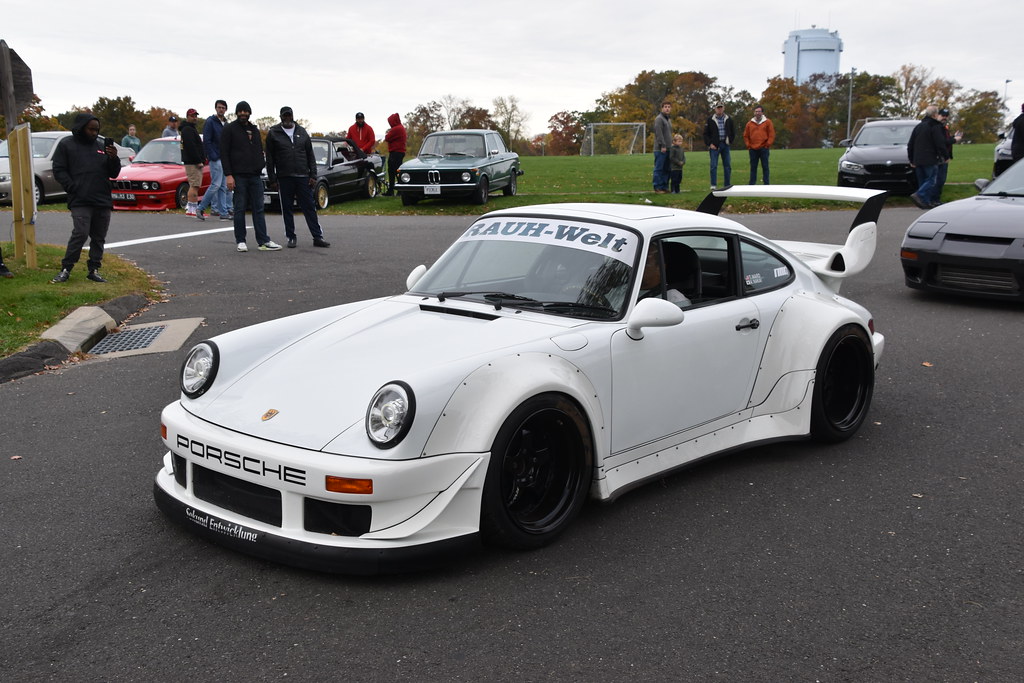
9. **Porsche 911 Turbo by RUF (993 Turbo)**Eddie Van Halen’s appreciation for German engineering ran deep, and another jewel in his collection was a magnificent Porsche 993 Turbo, customized by the renowned German specialists at RUF. Purchased new by Eddie in 1996, this 993 Turbo initially remained in its factory configuration for four years, allowing him to experience its pure, unadulterated performance before embarking on bespoke modifications.
However, it was inevitable that Eddie’s penchant for pushing boundaries would extend to this German icon. The car was sent to RUF, where it received significant upgrades designed to liberate even more exhilarating power. These enhancements included new turbos, camshafts, a specialized exhaust system, and a re-tuned ECU, all working in concert to boost its already impressive performance to new heights.
This 993 Turbo was a masterclass in high-performance automotive engineering. It featured all-wheel drive and a flat-six turbocharged engine, paired with a precise six-speed manual transmission, offering an incredibly engaging driving experience. Cloaked in a stunning Arena Red paint job and complemented by an all-black interior, it was a visual and auditory feast, perfectly marrying aggressive styling with raw power.
With RUF’s expert touch, this powerhouse could deliver a screaming 480 horsepower, allowing Eddie to reach a top speed of 184 mph. The car rounded out Van Halen’s collection of “go fast” German machinery beautifully. When it was eventually sold, it carried a remarkably low 21,000 miles on the odometer, a testament to its pristine condition and the care it received.
Car Model Information: 2025 Hyundai PALISADE XRT
Name: Porsche 911
Caption: The 1 millionth 911 produced on display at Volkswagen Group Forum, Berlin
Designer: Ferdinand Alexander Porsche
Manufacturer: Porsche
Production: September 1964 – present
Assembly: Stuttgart,Baden-Württemberg
Class: Sports car
BodyStyle: unbulleted list
Related: unbulleted list
Layout: Rear-engine design,rear-wheel drive
Predecessor: Porsche 356
Categories: 1970s cars, 1980s cars, 1990s cars, 2+2 coupés, 2000s cars
Summary: The Porsche 911 model series (pronounced Nine Eleven or in German: Neunhundertelf, or colloquially Neunelfer) is a family of two-door, high performance rear-engine sports cars, introduced in September 1964 by Porsche of Stuttgart, Germany, and now in its eighth generation. All 911s have a rear-mounted flat-six engine, and usually 2+2 seating, except for special 2-seater variants. Originally, 911s had air-cooled engines, and torsion bar suspension, but the 911 has been continuously enhanced, and evolved across generations. Though the 911 core concept has remained largely unchanged, water-cooled engines were introduced with the 996 series in 1998, and front and rear suspension have been replaced by Porsche-specific MacPherson suspension up front, and independent multi-link rear suspension.
The 911 has been raced extensively by private and factory teams, in a variety of classes. It is among the most successful competition cars. In the mid-1970s, the naturally aspirated 911 Carrera RSR won world championship races including Targa Florio and the 24 Hours of Daytona. The 911-derived 935 turbo also won the 24 Hours of Le Mans in 1979. Porsche won the World Championship for Makes in 1976, 1977, 1978, and 1979 with 911-derived models.
In a 1999 poll to determine the Car of the Century, the 911 ranked fifth — one of two in the top five that had remained continuously in production (the original Beetle remained in production until 2003). The one millionth example was manufactured in May 2017 and is in the company’s permanent collection.
Get more information about: Porsche 911
Buying a high-performing used car >>>
Brand: Porsche Model: 911 Turbo
Price: $40,788 Mileage: 5,081 mi.
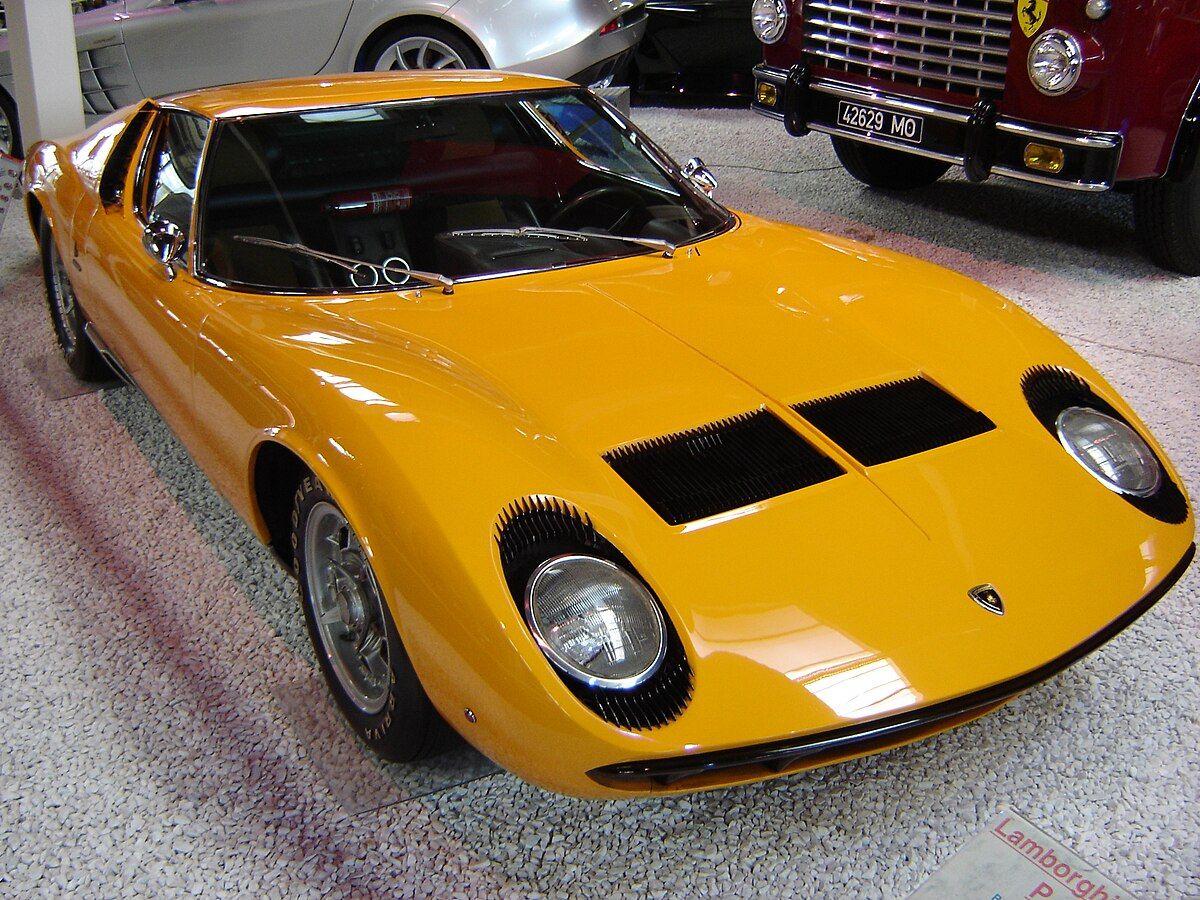
10. **Lamborghini Miura**Among the countless legendary cars Eddie Van Halen owned, his Lamborghini Miura holds a particularly iconic place, symbolizing true rock-star grandeur. It wasn’t just any car; this magnificent 1970 Miura S was a wedding gift from his first wife, Valerie Bertinelli, and its significance was immortalized in the band’s smash hit, “Panama,” where its glorious V12 engine can be heard revving in the song itself.
A factory ’70 Miura S was a marvel of its time, boasting a 3.9-liter, 239-cubic inch V12 engine that churned out 370 horsepower at 7700 rpm and 286 foot-pounds of torque. These impressive figures translated to a 0-60 mph sprint in just 5.5 seconds, a quarter-mile time of 13.9 seconds, and a top speed of 177 mph. Eddie famously described his Miura as “an adult go-kart,” highlighting its raw, exhilarating driving feel.
True to Eddie’s nature, his Miura was far from stock. It featured wider rims and distinctive side air intakes, modifications that not only enhanced its already striking appearance but also likely improved its performance or cooling. What’s even more fascinating is a later discovery by vintage exotic car dealership Curated, revealing that Eddie’s Miura was a “Lavorazioni Speciale,” hand-built straight from the factory with a broader body, vented fenders, and specific tires, initially mistaken for aftermarket mods.
This “Lavorazioni Speciale” was a rarity, being only five or six production numbers removed from the first Miura SV prototype. After falling into new hands, it was meticulously restored at the Lamborghini factory in Italy, a process that included returning it to its actual “Verde” (green) color, rather than the Van Halen red it once sported. In February 2021, its estimated value was a staggering $1.5 million, cementing its status as a truly unique and priceless piece of automotive history.
Read more about: Timeless Icons: 14 Classic 1960s Cars That Continue to Captivate Enthusiasts and Turn Heads
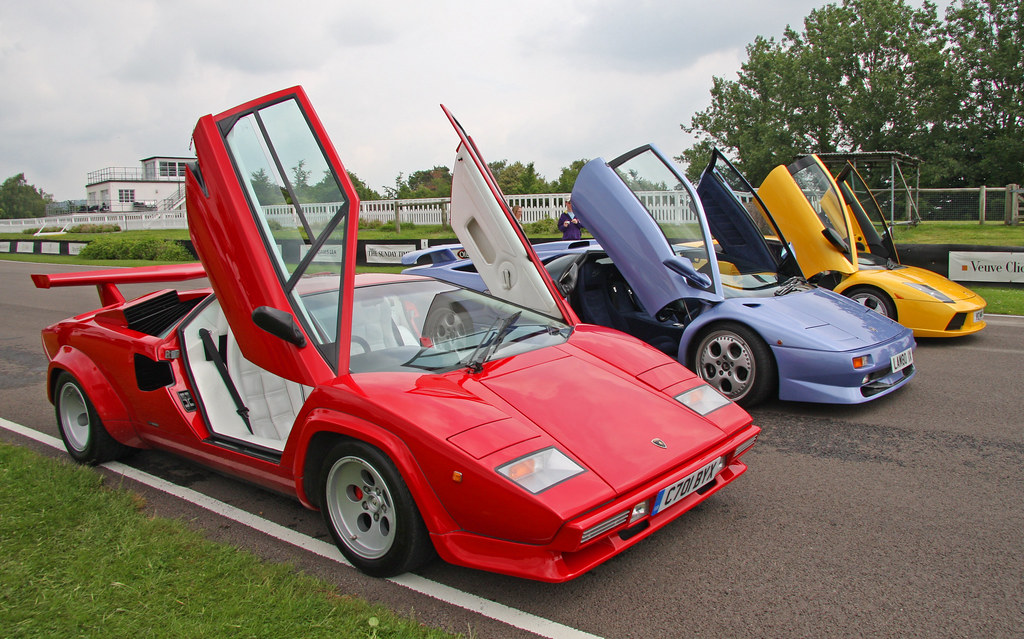
11. **1985 Lamborghini Countach**While the Miura held a special place in Eddie’s heart, it’s safe to say his 1985 Lamborghini Countach ran a very close second, embodying the aggressive spirit of the 80s supercar era. As Lamborghini’s definitive statement car and its undisputed first supercar, the Countach was a bold, unapologetic expression of automotive dominance, perfectly aligning with Eddie’s larger-than-life persona.
This wasn’t just a car; it was a bona fide high-performance beast designed to satisfy the most intense cravings for speed. The Countach boasted a powerful V12 engine that, in its standard configuration, delivered 374 horsepower. More impressively, it was capable of achieving an earth-shattering top speed of 221 mph, an almost unbelievable figure for its time that put it at the very pinnacle of automotive engineering.
The 1985 Lamborghini Countach was nothing short of an engineering masterpiece, a car that fundamentally shifted the landscape of supercar manufacturing. Before its arrival, Ferrari had largely held sway in this exclusive realm. However, with its groundbreaking design and performance, the Countach emerged as a formidable challenger, solidifying Lamborghini’s reputation for audacious innovation.
Its legendary status is undeniably linked to its distinctive “Italian Wedge” shape, characterized by sharp angles, pop-up headlights, and that unmistakable, towering rear spoiler. These design elements, combined with its ferocious performance specifications, made the Countach an automotive icon, a fitting addition to the garage of a rock legend who consistently pushed boundaries in every aspect of his life.
Read more about: Seriously, What Happened? 10 Iconic Headlight Styles That Vanished From Modern Cars

12. **1934 Ford Hotrod**Not solely focused on European exotics, Eddie Van Halen’s collection also paid homage to classic American hot-rodding, exemplified by his stunning 1934 Ford Custom Sedan. This gorgeous two-door hot rod was a masterpiece of customization, blending vintage aesthetics with modern performance upgrades, truly a high-order expression of personalized automotive art that reflected Eddie’s own bespoke “Frankenstein” guitar.
Underneath its beautifully crafted exterior, this Ford Hotrod was powered by a potent 350 cubic inch V8 Chevy engine, providing abundant power and a quintessential American muscle car roar. This robust engine was paired with a smooth four-speed automatic transmission, ensuring a comfortable yet spirited driving experience, whether cruising the boulevards or enjoying a spirited run.
Custom-built for Van Halen in the 1990s, the car featured an original all-steel body, a detail highly prized by hot rod enthusiasts for its authenticity and craftsmanship. Its exterior was further enhanced by a striking front grille and a Jaguar-inspired rear end, adding unique styling cues. Power windows and distinctive doors that opened towards the rear of the car further showcased its bespoke nature, making it a true one-of-a-kind creation.
The interior of this classic hot rod was just as impressive, featuring a stunning camel-colored leather finish that exuded luxury and comfort. For even more punch, the car was equipped with a B&M supercharger, signaling its serious performance intent. When not out on the road, Eddie ensured this cherished vehicle was stored in a climate-controlled environment, preserving its beauty until it eventually sold at auction in 2021 for an undisclosed price.
Read more about: Revving Up History: The McGee Roadster & Iconic Classic Hot Rod Builds

13. **1979 CJ-5 Jeep Renegade**Embracing an entirely different facet of automotive adventure, Eddie Van Halen also owned a rugged 1979 CJ-5 Jeep Renegade. This military-esque vehicle perfectly captured the spirit of the early 1980s, a time when Van Halen himself was bursting onto the scene, and it undoubtedly suited the wild, untamed energy that defined his music and stage presence. This silver Jeep appeared in now-famous images of a young Van Halen, captured by world-renowned music photographer Neil Zlozower, solidifying its place in his personal history.
Eddie’s CJ-5 Renegade was equipped for off-road excitement, featuring a roll cage, no doors for an open-air experience, and a soft top roof. While it was somewhat customized, the Jeep also came with impressive standard-issue specifications, including chunky 30.1-inch tires that made off-roading a breeze. These were complemented by eight-spoke wheels and a generous 53-inch track width, providing stability on challenging terrains.
Underneath, the Renegade boasted a robust manual three-speed gearbox and a part-time 4×4 suspension system, ensuring it could tackle any landscape Eddie dared to explore. While it’s not explicitly detailed how much Van Halen utilized its fantastic off-road capabilities, the vehicle’s inherent ruggedness and adventurous spirit certainly aligned with his dynamic and free-spirited personality, embodying a different kind of freedom than his supercars.
Car Model Information: 1976 Jeep CJ-5 Base
Name: Jeep CJ
Caption: Jeep CJ-2A
Manufacturer: Willys-Overland,Willys Motors,Kaiser Jeep,American Motors Corporation
BodyStyle: Sport utility vehicle,convertible,pickup truck
Production: 1944–1986,More than 1.5 million
Class: sport utility vehicle
Layout: Front-engine, rear-wheel-drive layout,rear-wheel drive
Assembly: Toledo, Ohio,Maywood, California,Santa Isabel, Córdoba,Rocklea, Queensland,São Bernardo do Campo,Brampton, Ontario,Cairo,Haifa,Nof HaGalil,Tehran,Toluca, Mexico State,Zaragoza,Istanbul
Predecessor: Willys MB,Jeep Commando
Categories: AMC vehicles, All articles with unsourced statements, American Motors, Articles with short description, Articles with unsourced statements from April 2025
Summary: The Jeep CJ models are a series and a range of small, open-bodied off-road vehicles and compact pickup trucks, built and sold by several successive incarnations of the Jeep automobile marque from 1945 through 1986. The 1945 Willys “Universal Jeep” was the world’s first mass-produced civilian four-wheel drive car.
In 1944, Willys-Overland, the primary manufacturer of the World War II military Jeep, built prototypes for a commercial version – the CJ, short for “civilian Jeep”. The design was a direct evolution from the wartime Jeep, but the most obvious change was adding a tailgate, and relocating the spare wheel to the side. Also, besides adding basic civilian amenities and options and legally-compliant lighting, the CJ required a sturdier drivetrain than the wartime model, because the targeted rural buyers would expect years of durability, instead of mere weeks as during WWII.
From then on, all CJ Jeeps consistently had a separate body and frame, rigid live axles with leaf springs both front and rear, a tapering nose design with flared fenders, and a fold-flat windshield, and could be driven without doors. Also, with few exceptions, they had part-time four-wheel drive systems, with the choice of high and low gearing, and open bodies with removable hard or soft tops. A few stand-out changes during 42 model years were the introductions of round-fendered vs. flat-fendered bodies (1955 CJ-5), straight-6 and V8 engines, automatic gearboxes, and different 4-wheel drive systems. The 1976 CJ-7 stretched the wheelbase by 10 inches (25 cm), and made doors and a removable hardtop common items.
After remaining in production through a range of model numbers and several corporate parents, the Jeep CJ line was officially ended after 1986. More than 1.5 million CJ Jeeps were built, having continued the same basic body style for 45 years since the Jeep first appeared. Widely regarded as “America’s workhorse”, the CJs have been described as “probably the most successful utility vehicle ever made.” American Motors VP Joseph E. Cappy said the end of “CJ production will signal an end of a very important era in Jeep history.” In 1987, the Jeep CJ-7 was replaced by the first-generation Jeep Wrangler. Looking very similar and riding on the same wheelbase as the CJ-7, it carried over some important components, including its use of leaf springs.
A similar model, the DJ “Dispatcher”, was introduced in 1956 as a two-wheel drive version with open, fabric, or a closed steel body in both left- and right-hand drives for hotel, resort, police, and later United States Postal Service markets.
Get more information about: Jeep CJ
Buying a high-performing used car >>>
Brand: Jeep Model: CJ-5
Price: $19,999 Mileage: 19,958 mi.
Read more about: Remember These? 13 Rides That Went From Sought-After to Stale.

14. **The Lambo Rambo (Lamborghini LM002 SUV)**Speaking of rugged, no discussion of Eddie Van Halen’s diverse garage would be complete without highlighting the utterly outrageous and incredibly rare “Lambo Rambo,” also known as the Lamborghini LM002 SUV. This off-road beast was a stark departure from the sleek supercars Lamborghini was known for, yet it perfectly encapsulated Eddie’s taste for the extraordinary and his love for powerful, unique machines. Lamborghini only manufactured a handful of these from 1986 to 1993, making Eddie one of the privileged few celebrity owners of this colossal vehicle, which retailed for approximately $120,000.
The LM002’s lineage traced back to Lamborghini’s “Militaria” series of vehicles, including the Cheetah and LM001, which initially featured American V8 engines. However, the production LM002 received a monumental upgrade, borrowing the monstrous V12 engine directly from the iconic Countach. This gave the “Lambo Rambo” a level of power and prestige rarely seen in an SUV, cementing its status as an unparalleled off-road luxury vehicle.
Beyond its formidable Countach-derived V12, the LM002 was engineered for extreme conditions. It was fitted with custom tires specially commissioned by Pirelli, designed to run effectively even when nearly without air, a testament to its intended use in challenging environments. Furthermore, its massive 169-liter gas tank ensured an extensive range, crucial for an SUV of its size and power, whether traversing deserts or simply cruising California highways with Eddie behind the wheel.
Car Model Information: 2025 Hyundai PALISADE XRT
Caption: 1988 Lamborghini LM002
Name: Lamborghini LM002
Manufacturer: Lamborghini
Aka: Lamborghini LM/American
Production: 1986–1993
Assembly: Sant’Agata Bolognese
Class: Light commercial vehicle
BodyStyle: SUV,SUV
Layout: Front-engine, four-wheel-drive layout
Platform: tubular steel frame,riveted aluminium body panels
Designer: Giulio Alfieri
Related: Lamborghini Countach
Engine: Lamborghini V12#First generation,Lamborghini V12#First generation
Transmission: Manual transmission
Wheelbase: 2950 mm
Abbr: on
Length: 4790 mm
Width: 2000 mm
Height: 1850 mm
Weight: 2700 kg
Predecessor: Lamborghini Cheetah,Lamborghini LM001,Lamborghini LMA002
Successor: Lamborghini Urus
Categories: 1990s cars, Articles with short description, CS1 Japanese-language sources (ja), CS1 Swedish-language sources (sv), Cars discontinued in 1993
Summary: The Lamborghini LM002 is an off-road vehicle manufactured by Lamborghini between 1986 and 1993. The LM002 was an unusual departure for Lamborghini which, at the time, was primarily known for high-performance, hand-built, super/sports cars. The LM002 was not the first of its kind to be built by Lamborghini. Two prototype vehicles, the Cheetah and the LM001, paved the way for LM002. Both vehicles used rear-mounted American power plants and were intended for military use, but were not well received. With the idea of using a front mounted Countach V12 to power the LM001 came the next model, the “LM002”, which was the first of the three to see actual production by Lamborghini. The LM002 is part of the Lamborghini Militaria series of vehicles.
Get more information about: Lamborghini LM002
Buying a high-performing used car >>>
Brand: Lamborghini Model: LM002 SUV
Price: $40,788 Mileage: 5,081 mi.
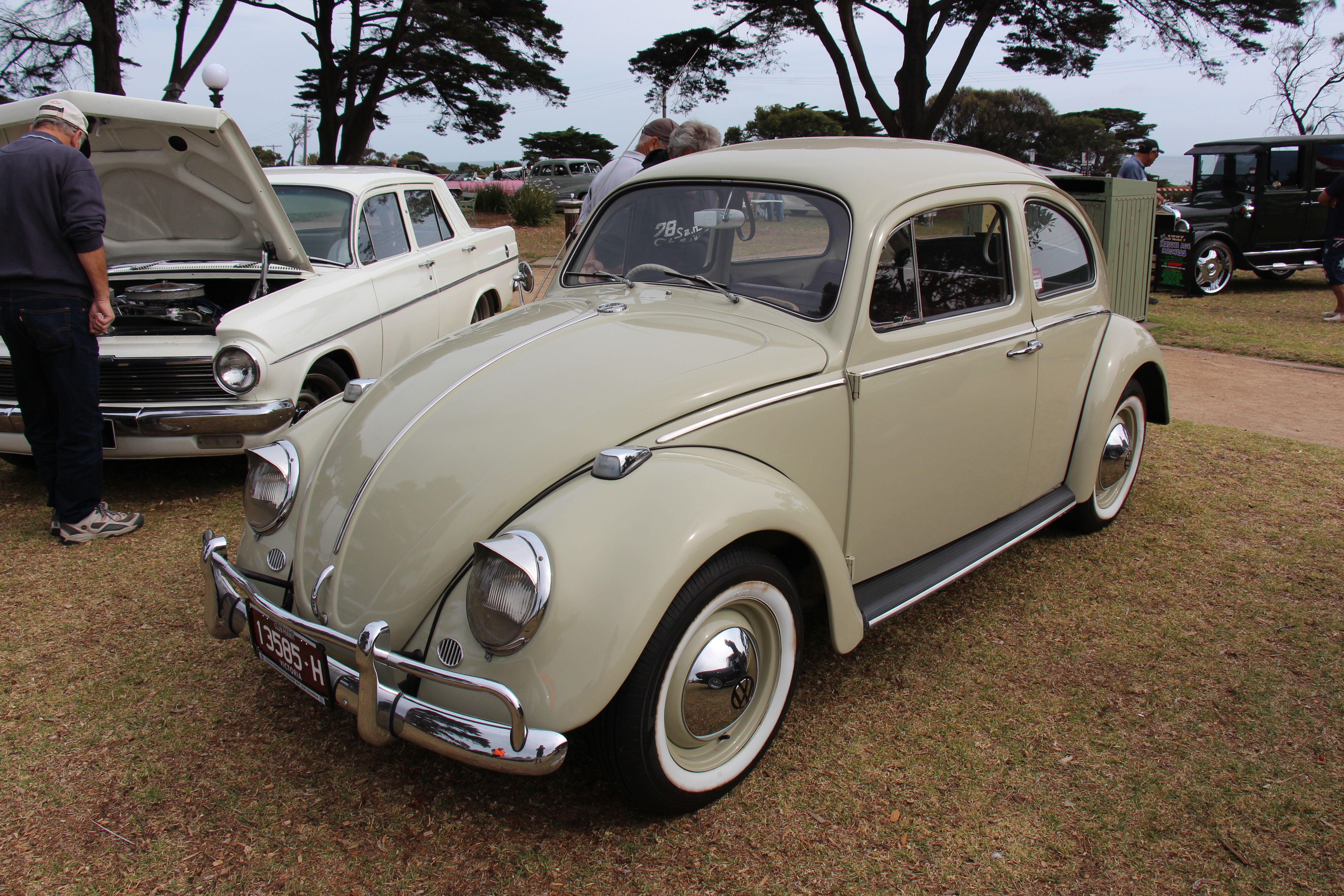
15. **1964 Volkswagen Beetle**Rounding out Eddie Van Halen’s impressively varied collection was a vehicle that, at first glance, might seem like an unexpected entry: a gorgeous 1964 Volkswagen Beetle. Far removed from his high-performance Italian and German custom builds, this Beetle was likely a “because I could” purchase, a nod to its iconic status and timeless appeal. It speaks volumes about Eddie’s genuine love for cars in all their forms, from the fastest supercars to the most beloved, unassuming classics.
Indeed, almost anything from Volkswagen in the 1960s could be considered iconic, but arguably no VW is more universally recognized than the 1964 Beetle. Eddie’s particular Beetle was a vibrant, purple-ish color, a distinctive shade that certainly made it stand out. True to his customizing spirit, the interior was a bespoke affair, featuring a custom pink and black color scheme that extended to the stitching in the seats and even a custom pink and black steering wheel.
This wonderfully eccentric Beetle perfectly exuded the unique personality that Eddie Van Halen was renowned for. It was a vehicle that was undeniably his, reflecting a playful and artistic approach to his automotive choices. Such was its character and appeal that this custom Beetle even earned a feature in *Hot VWs* magazine, cementing its place not just in Eddie’s garage, but also in the broader culture of custom car enthusiasts.
Car Model Information: 2012 Volkswagen Beetle 2.5L
Sp: uk
Name: Volkswagen Type 1,”Beetle”
Caption: 1965–1966 Volkswagen Käfer
Manufacturer: Volkswagen
Alt: A front-three quarters view of a pale-yellow Volkswagen Käfer. It features 165/80R15 tires, which shod 15×4. 5″ silver, circular wheels. The Käfer features a beetle-like body, and its window is open. The picture is taken with much greenery in the background, and the photo was edited to give it a more warmer tone.
Aka: List of names for the Volkswagen Type 1
Assembly: #Markets and assembly
Designer: Ferdinand Porsche
Class: Small family car
BodyStyle: Sedan (automobile),convertible
Production: 1938–2003,21,529,464 produced
Successor: Volkswagen Golf Mk1,Volkswagen Gol#First generation (Typ30, 1980),Volkswagen New Beetle
Layout: Rear-engine, rear-wheel-drive layout
Engine: Petrol,Volkswagen air-cooled engine,1192 cc H4,1285 cc H4,1493 cc H4,1584 cc H4
Transmission: manual transmission,Saxomat,Autostick
Wheelbase: convert
Length: convert
Width: convert
Height: 1500 mm
Abbr: on
Weight: convert
Categories: 1940s cars, 1950s cars, 1960s cars, 1970s cars, 1980s cars
Summary: The Volkswagen Beetle, officially the Volkswagen Type 1, is a small family car produced by the German company Volkswagen from 1938 to 2003. A global cultural icon known for its bug-like design, the Beetle is widely regarded as one of the most influential cars of the 20th century. Its production period of 65 years is the longest for any single generation of automobile, and its total production of 21.5 million units makes it the most produced car of a single platform in history and the second-highest of all nameplates manufactured in the 20th century.
The Beetle was conceived in the early 1930s. The leader of Nazi Germany, Adolf Hitler, decided there was a need for a people’s car—an inexpensive, simple, mass-produced car—to serve Germany’s new road network, the Reichsautobahn. The German engineer Ferdinand Porsche and his design team began developing and designing the car in the early 1930s, but the fundamental design concept can be attributed to Béla Barényi in 1925, predating Porsche’s claims by almost ten years. The result was the Volkswagen Type 1 and the introduction of the Volkswagen brand. Volkswagen initially slated production for the late 1930s, but the outbreak of war in 1939 meant that production was delayed until the war had ended. The car was originally called the Volkswagen Type 1 and marketed simply as the Volkswagen. It was not until 1968 that it was officially named the “Beetle”.
Volkswagen implemented designations for the Beetle in the 1960s, including 1200, 1300, 1500, 1600, 1302, and 1303. Volkswagen introduced a series of large luxury models throughout the 1960s and 1970s—comprising the Type 3, Type 4 and K70—to supplement the Beetle, but none of these models achieved the level of success that it did. In 1972, it became the best-selling car of all time, a position it retained for nearly three decades. Rapidly changing consumer preferences toward front-wheel drive compact hatchbacks in Europe prompted Volkswagen’s gradual shift away from rear-wheel drive, starting with the Golf in 1974. In the late 1970s and ’80s, Japanese automakers dominated some markets around the world, which contributed to the Beetle’s declining popularity.
The Beetle remains one of the best-selling cars of all time and is the first to sell over 20 million units. Over its lifespan, its design remained consistent, yet Volkswagen implemented over 78,000 incremental updates. These modifications were often subtle, involving minor alterations to its exterior, interior, colours, and lighting. Some more noteworthy changes included the introduction of new engines, models and systems, such as improved technology or comfort. The Beetle maintains a substantial cultural influence and is regarded as one of the most iconic vehicles in automotive history; its success largely influenced the way automobiles are designed and marketed, and propelled Volkswagen’s introduction of a Golf-based series of vehicles.
Get more information about: Volkswagen Beetle
Buying a high-performing used car >>>
Brand: Volkswagen Model: Beetle
Price: $13,985 Mileage: 27,389 mi.
Read more about: Beware: These Classic Cars Are Not Worth Restoring – An Expert Guide for Enthusiasts
Eddie Van Halen’s garage was far more than just a place to park cars; it was a sprawling, vibrant testament to a life lived full-throttle, defined by an insatiable hunger for creativity, innovation, and exhilarating experiences. Each car, whether a brutal hot rod, a screaming supercar, or a quirky cruiser, served as an extension of his own dynamic spirit. His collection wasn’t about mere accumulation; it was about the thrill of the drive, the beauty of engineering, and the endless possibilities of customization. As we remember the maestro who redefined rock guitar, we also celebrate the passionate car enthusiast who lived life as loudly and colorfully as his iconic riffs, leaving behind a legacy that continues to rev our engines and inspire. What a ride it was, indeed!



